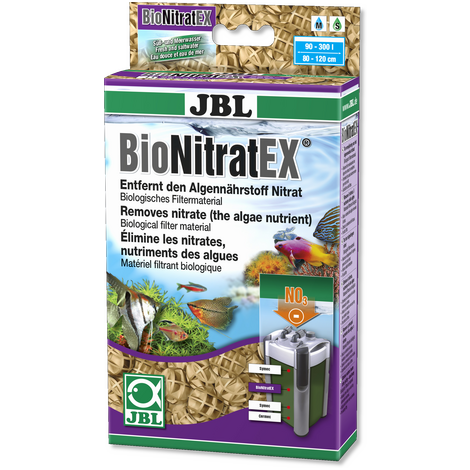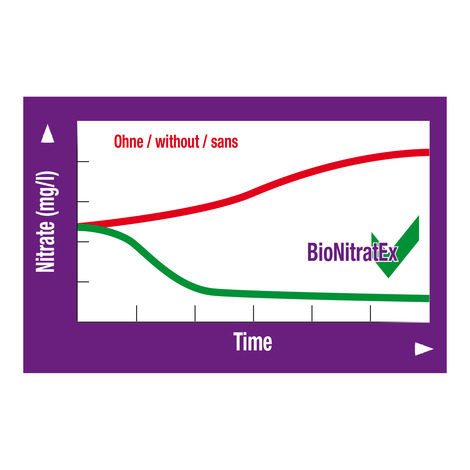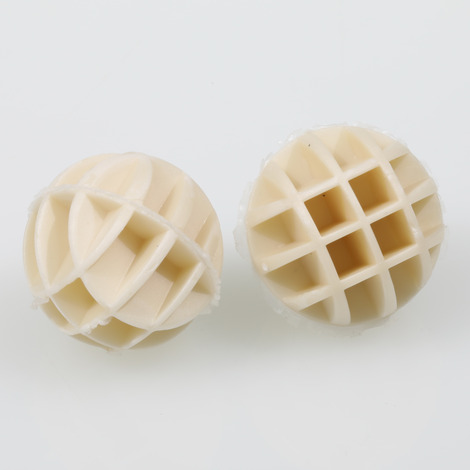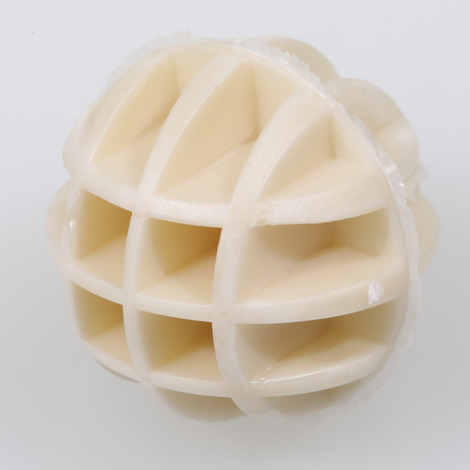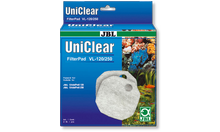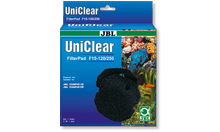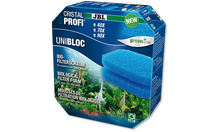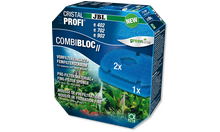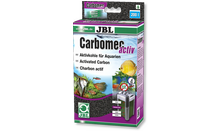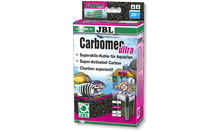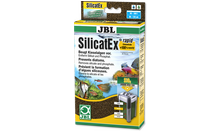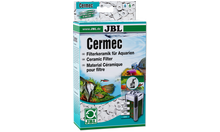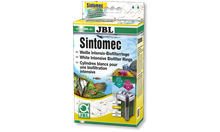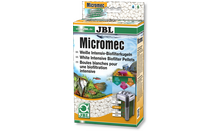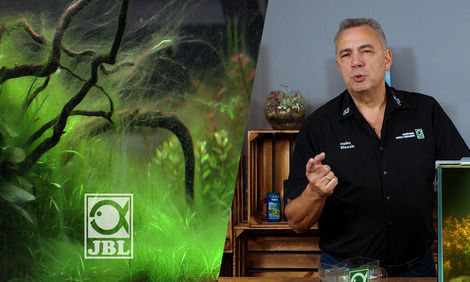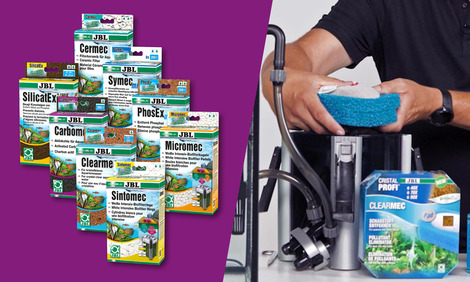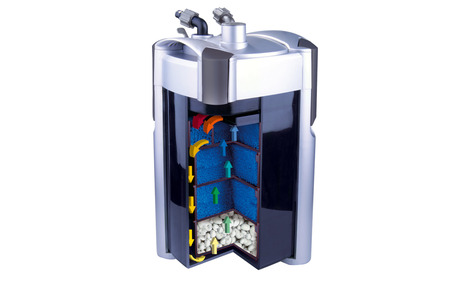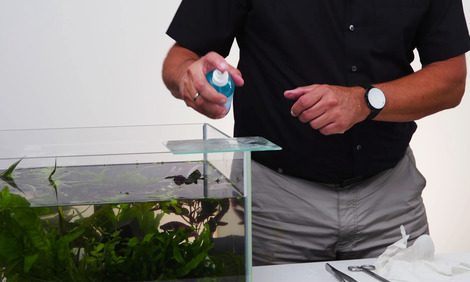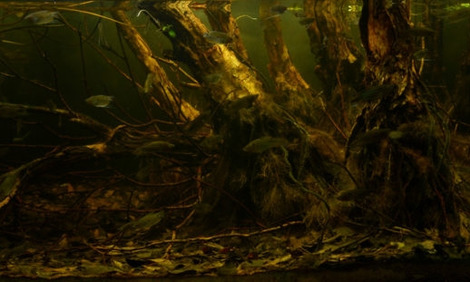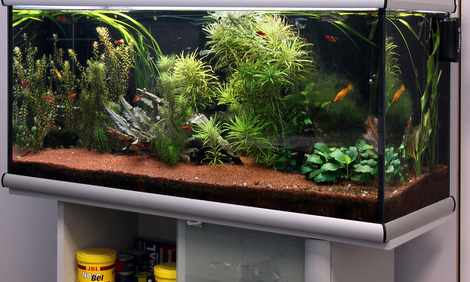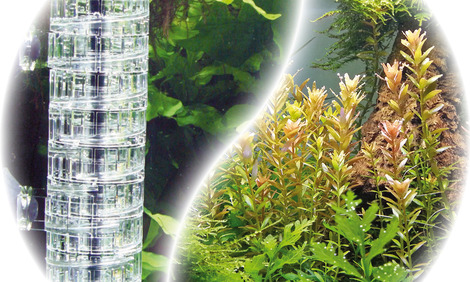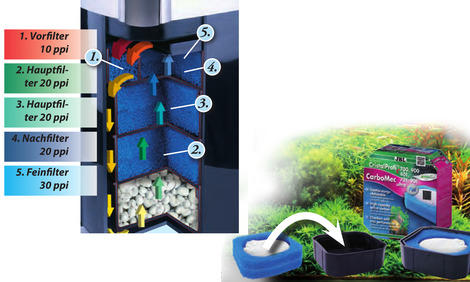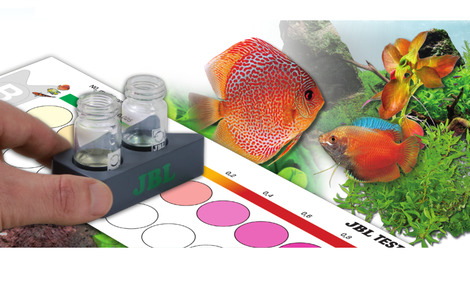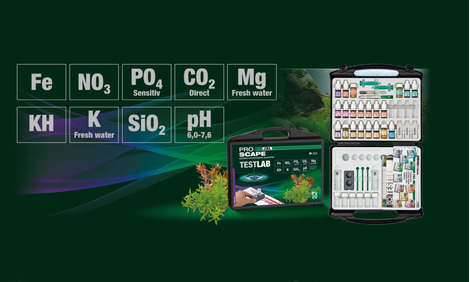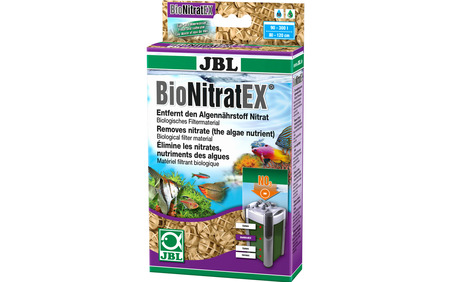If you don’t get anything to eat you’ll starve to death:
Nitrates and phosphates form main nutrients for algae. If one or both nutrients are withdrawn from the water, the algae will stop growing! However, bacteria only break down nitrate under specific conditions. Only when there is no longer any oxygen, but there is a carbon source (a nutrient for bacteria) available, do the bacteria remove the oxygen from the nitrate, thus breaking it down.
That’s how JBL BioNitratEx works:
Bacteria settle on the surface of the JBL BioNitratEx balls within about 4 weeks and form a thick biofilm. Beneath the biofilm a low-oxygen zone forms, in which the bacteria then switch to "nitrate respiration" to degrade the algae-promoting nitrate (NO3). The bio balls serve the bacteria as food and the nitrate serves as a supplier of oxygen. That’s why the bio balls become smaller as time goes by (easy to check visually) and disappear completely. This takes about 6-12 months, depending on the nitrate pollution. Then you’ll need to replace the bio balls.
Snails: If lots of snails reach the JBL BioNitratEx balls they will eat the biofilms from the balls’ surface. As a result oxygen will reenter the lowest bacterial layers, which then will no longer need to dissolve the oxygen from the nitrate in order to break it down with it. If you have a lot of snails it is better to put the JBL BioNitrat Ex balls into a fine bag to block the snails’ access.
The difference to JBL NitratEx:
JBL BioNitratEx works on a purely biological basis through bacterial nitrate breakdown. In contrast JBL NitratEx is a synthetic resin which binds nitrate from the water (freshwater only!) and replaces it with harmless chloride (ion exchanger function principle). The advantage of this system is that it works quickly and you can use it to remove nitrate from tap or well water etc.
Products & Shop
JBL BioNitratEx
Biological filter material for the removal of nitrate
- Biological filter material which is degraded by bacteria to remove algae-promoting nitrate from freshwater and marine water
- Just add filter material to internal or external filter and only refill when it has been degraded by the bacteria after approx. 6 month
- Bacteria settle on the bio balls and form a thick biofilm. Underneath the oxygen level drops, so that the bacteria there can remove oxygen from the nitrate and thus degrade it
- Water stabilising effect: since pH decreasing acids are created during the bacterial degradation processes, the bio balls contain acid binding minerals to stabilise the water
- Package contents: 100 bio balls for the nitrate breakdown in 200-300 litres aquarium water; 1 ball / 2-3 litres of water
You may also be interested in
JBL BioNitratEx
Properties
| Animal species: | Armored catfish, Arowana, Axolotl, Barbels, Bettas, Bichirs/reedfish, Blowfish, Catfish, Cichlids (South America), Clawed frogs, Clawed shrimps, Corals, Crayfish, Crustaceans, Danions, Discus, Dwarf crayfish, Dwarf shrimps, Flowerhorn, Gill maggots, Gobies, Goldfish, Gouramis, Guppy, Juvenile fish, Killifish, Livebearers, Loaches, Mussels, Newts, Panchaxes, Rainbowfish, Snails, Spiny eels, Tetra, Tropical terrapin, Veiltails, Water turtles, blood parrot cichlids, freshwater butterflyfish |
| Animal size: | For all animal sizes |
| Animal age group: | All aquarium fish |
| Volume habitat: | 90-300 L (80-120cm) |
| Material: | Bioplastics (PHA polyhydroxyalkanoate) |
| Colour: | natural |
| Dosage: | 100 balls for 200l aquarium water |
Electronic label / illuminant
| Mercury: | No |
| Dimmable: | No |
The diameter is 20 – 20.5 mm.
No, it is not necessary to replace the JBL BioNitratEx filter balls for nitrate removal. The balls are broken down by the bacteria and the carbon source they contain is used for nitrate removal. After 6 months you’ll need to refill the missing quantity (1 ball per 2-3 l water). Please do not remove the remaining balls, as they serve to inoculate the newly added balls. Please note that the balls need to be embedded in a layer of fine filter fleece so that the smallest parts of the degradation do not get into the other filter material. In marine water, the additional use of activated carbon is recommended to avoid initial cloudiness.
Algae problems in an aquarium can never be traced to just one factor or general condition, and instead, are always the result of a combination of different factors, which include light, fertilization, water changes – specifically, how often and how much – feeding, fish population and, of course, the specific water parameters.
According to analyses that were performed over a course of a number of years, red algae, at least the common brush algae and beard algae, occur in descending order at the following parameters:
1) too little carbon dioxide (in relationship to 100 % of the measured tank); the pH level should be in the slightly acetic range, depending on the carbonate hardness, in every case.
2) elevated phosphate levels (over 90 %); phosphate limitation by means of JBL PhosEx ultra is often helpful here.
3) too little and too irregular fertilization (there should always be traces of iron at least).
4) insufficient water changes; a weekly water change of over 30 % is recommended for algae problems.
5) not enough fast-growing plants.
Yes, of course, you can also use BioNitratEx in an internal filter. We have inserts for the internal filter series that are just for this purpose.
JBL BioNitrat Ex acts more slowly than JBL NitratEx, with so-called denitrification by bacteria forming the basis. The material can be effective for up to 12 months.
Reviews
0 Reviews
5 more reviews in other languages
5 Reviews in other languages
Einfach super ich benutz dieses Produkt bei meinem Außenfilter im Meerwasseraquarium und bin sehr zufrieden damit.
Gruß Martin
Das Produkt hat sich in der Beschreibung tatsächlich sehr interessant angehört, so sehr das ich sehr skeptisch wurde. Nunja was soll ich sagen. Nachdem ich es benutzt habe sank der Nitratwert significant und ich war sprachlos. Unbedingt weiter zu empfehlen
In meinem Aufzuchtbecken sind seit einiger Zeit immer mal Fische gestorben, ohne ersichtlichen Grund. Bis ich festgestellt habe, dass der Nitrat-Wert zu hoch ist. Daraufhin habe ich BioNitratEx in meinen Filter gegeben und es war eine deutliche Besserung der Nitrat-Werte erkennbar. Dennoch sollten natürlich regelmäßige Wasserwechsel nicht fehlen!
Das Produkt kann ich jedem empfehlen, der Probleme mit seinen Nitrat-Werten hat!
Ein sehr tolles Produkt welches ich in jedem meiner Außenfilter verwende! Ein Bio Filtermedium darf in einem Außenfilter nicht fehlen. Meine Aquarien laufen mit den Außenfilter von JBL und den verschiedenen Filtermedien sehr gut und stabil. Eine klare Empfehlung!
Ein tolles Produkt !
Auch für Aquarium Neulinge leicht zu verstehen ist das Medium weg wird es Zeit für neues 😄👍
